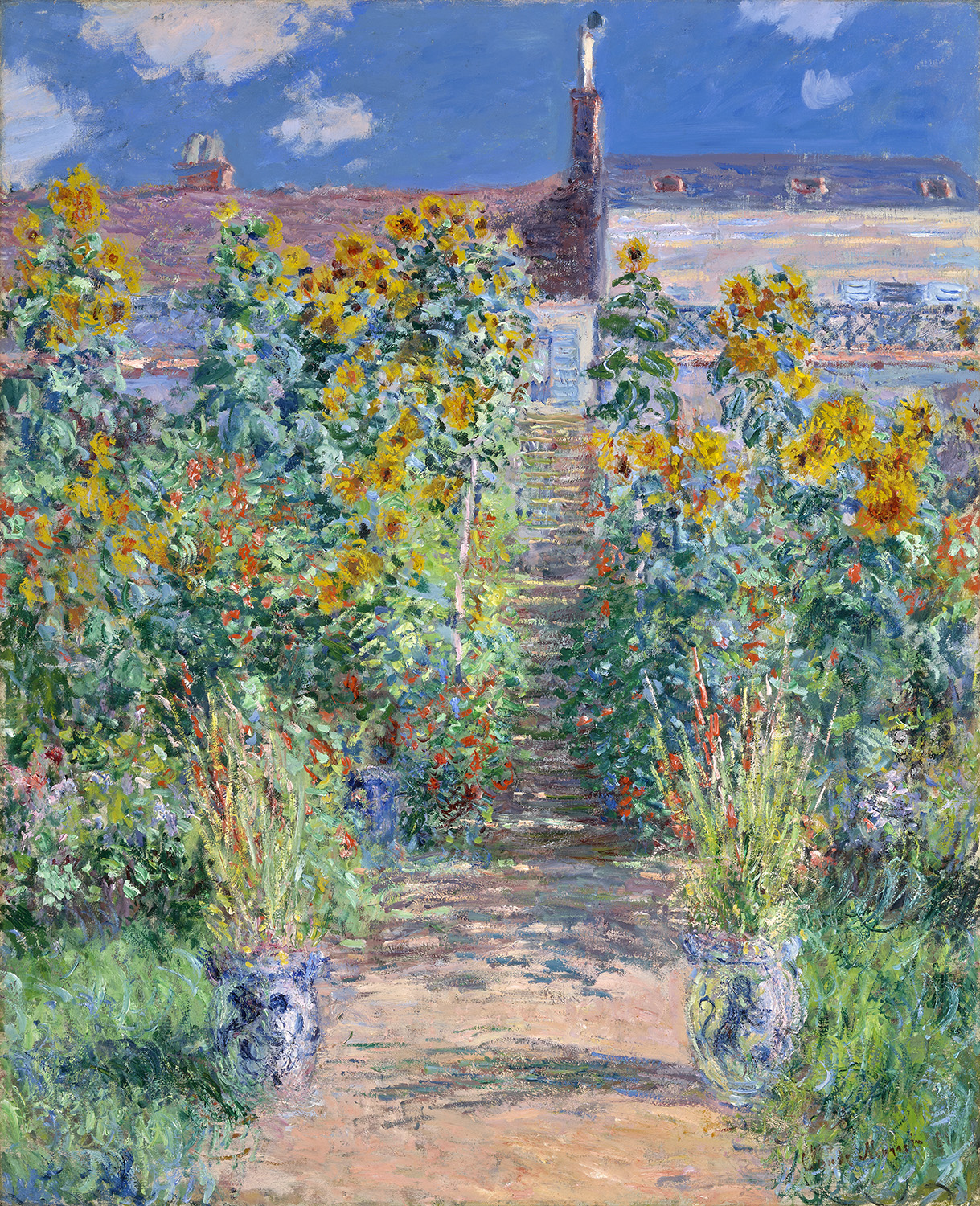The Artist’s Garden at Vétheuil
1881
Claude Monet (French, 1840–1926)
Oil on canvas
The Norton Simon Foundation
The years that Monet spent at a rented pink house in Vétheuil were among the most difficult of his life. The market for his work had collapsed; his wife fell ill and died; his servants all quit. And yet the pictures he painted there, in his lush, sunny garden conceived as an outdoor studio, are among the most exuberant of his career. This view of a path shaded by sunflowers and punctuated with gladioli was one of four studies of the scene that Monet made in the early 1880s. The Norton Simon’s version has long been thought to serve as a preparatory sketch for the largest canvas, today in the collection of the National Gallery of Art. However the artist’s comparatively tight, confident brushwork in this painting—particularly in the handling of the sky and clouds—suggests that it is a more fully realized reduction of the National Gallery’s composition, perhaps made with a bourgeois buyer in mind.
Claude Monet’s The Artist’s Garden at Vétheuil—Two Masterworks Reunited
Why would an artist paint multiple versions of the same scene? In 2018, a special installation reunited two of the four versions of Monet’s Garden at Vétheuil for the first time since they were created. The pair was installed at the National Gallery of Art in Washington, D.C., as part of an ongoing loan partnership between the two institutions. A conversation between Chief Curator Emily Talbot and Kimberly A. Jones, Curator of 19th-Century French Paintings at the National Gallery of Art, considers the artist’s brushwork, lighting, inclusion of figures and rendering of clouds to explore a nonlinear relationship between this series of paintings. The audio recording treats Monet’s artistic practice from the garden to the studio.
